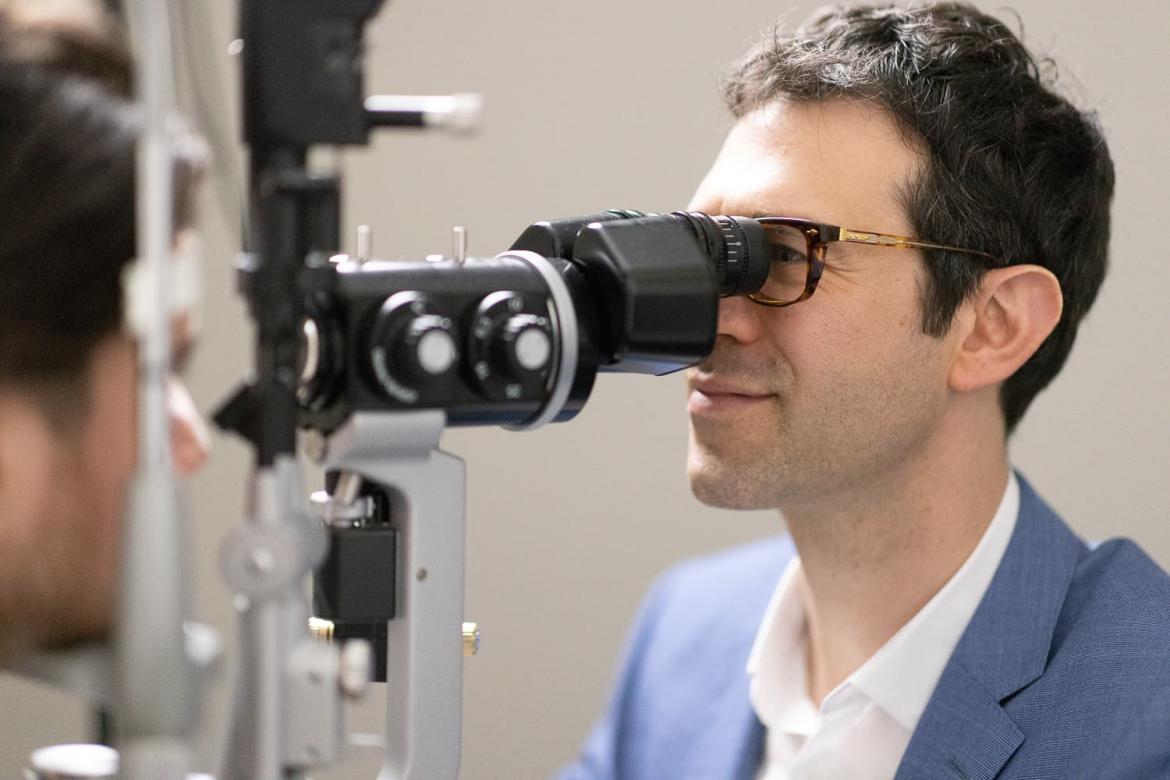How do my genes influence my risk of having glaucoma?

Genes are a major influence for one’s risk of glaucoma. Twenty-five years ago we thought glaucoma was simply an ageing degenerative disease; today we are recognising the important role of genes. This influences our priorities in research and glaucoma treatment. Family history has become very important when assessing an individual’s risk of glaucoma.
Glaucoma genetic research
Recently, there has been great interest in glaucoma genetic research, and consequently over 100 genes have been identified, linked with glaucoma. These each influence one or several of the factors that contribute to glaucoma risk – some are linked with raised eye pressure, some with the shape of the optic nerve, some with the optic nerve’s susceptibility to pressure-related damage.
Genes have even been found that influence an individual’s response to common eye pressure, reducing use of eyedrops within glaucoma treatment. These many genes interact in a complex way to lead to an individual’s phenotype: which means what type of glaucoma they have, how bad the glaucoma is, whether they will require surgery for glaucoma.
However, there is no clear-cut relationship between individual genes and a person’s risk for glaucoma. For some other genetic diseases, caused by one faulty gene, the inheritance pattern is clear, and the inheritance pattern across generations of families can be mapped out with a family tree; accordingly the genetic risk for offspring can be determined based on testing of individual genes.
Glaucoma is different. Because there are over 100 genes linked with glaucoma, it is not as easy to test for all of these, and even harder to interpret the testing results. What’s more, non-genetic factors, such as age, lifestyle, previous trauma, medications, co-morbid diseases, are also major influences of glaucoma – clearly the genes make up only part of the story.
For this reason, it can be hard to predict anyone’s risk of glaucoma, or its severity, based on their genes alone. Such a prediction would be useful – it would help guide glaucoma specialists and patients as to how often glaucoma testing is needed, and how low the eye pressure needs to be.
Today, many people are monitored regularly as glaucoma suspects, requiring testing for glaucoma every 1-2 years in case they develop it. If we could predict their risk of glaucoma based on genetic knowledge, we would know more confidently how frequently glaucoma suspects should be monitored. Those decisions are currently based on other factors, such as the appearance of their optic nerves, their eye pressure, and their general health.
However, work is being done to develop and refine genetic tests for glaucoma, using our new-found knowledge. Time will tell how useful such tests will be and how they are integrated into clinical practice. What is clear is that with today’s technology wide-spread population screening for glaucoma is not economically viable or sufficiently accurate; and yet 50% of glaucoma in developed countries is undetected, and early detection is our best chance to prevent irreversible damage and save sight.
Hopefully our increasing knowledge of genes in glaucoma will shift the balance and make glaucoma screening programs targeted to at-risk individuals viable.
If you require glaucoma treatment from a specialist Ophthalmologist in Melbourne, contact A/Professor Simon Skalicky for an appointment.